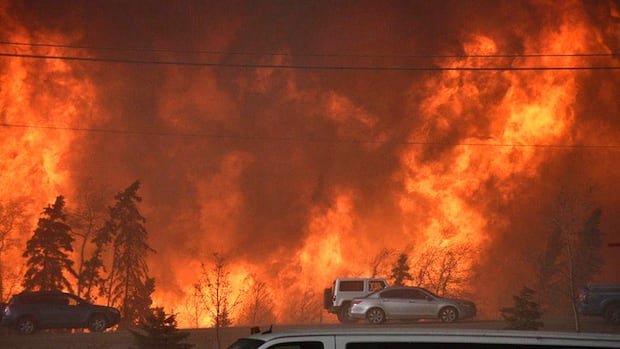In 2016, the Fort McMurray wildfire, famously known as The Beast, emerged as Canada’s most financially damaging disaster, with nearly $10 billion in losses. This catastrophic event compelled the evacuation of a record-breaking 90,000 individuals, showcasing scenes reminiscent of a Hollywood blockbuster.
According to Vancouver author John Vaillant, witnessing trees and houses erupt into flames within minutes during the Fort McMurray fire was a shocking reality for firefighters. Vaillant introduces the concept of the Petrocene era, highlighting the profound impact of fossil fuel reliance on our planet, leading to a new era of intensified fires due to the escalating climate crisis.
In his acclaimed book, “Fire Weather: The Making of a Beast,” Vaillant delves into the tragic 2016 Fort McMurray wildfire and delves into humanity’s complex relationship with fire throughout history. While acknowledging fire’s pivotal role in human evolution and civilization, Vaillant also underscores how fire has evolved into a destructive force beyond our control.
The Petrocene Age, as Vaillant terms it, traces back to the inception of the kerosene industry and the rise of Big Oil in the late 19th century, shaping our current economic and societal structures. Despite the ongoing transition to renewable energy sources, fossil fuels remain the primary driver of approximately 84% of our economy, as noted by energy historian Daniel Yergin.
Vaillant raises a poignant question about humanity’s perceived mastery over fire and fossil fuels versus the stark reality of being subservient to these elements. He highlights the alarming scale and impact of human-induced fires worldwide, emphasizing how our actions have inadvertently made the Earth more susceptible to flames through excessive CO2 and methane emissions.
Reflecting on his personal connection to fire, Vaillant describes a nuanced relationship characterized by reverence and fear, especially in the face of escalating climate uncertainties. As the climate continues to evolve unpredictably, he underscores the imperative for continual adaptation to the changing environmental landscape.
In conclusion, the narrative presented by Vaillant challenges conventional notions of human dominance over fire, urging a reevaluation of our symbiotic relationship with this elemental force.


